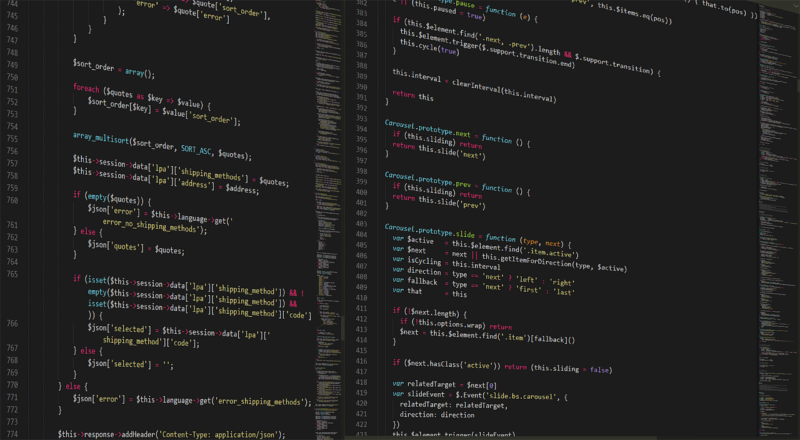The Ultimate Guide to Becoming a Front-End Developer: Skills, Tools, and Resources
November 13, 2024

Front-end development has emerged as one of the most sought-after careers in the tech industry, thanks to the growing demand for digital interfaces and user experiences. A front-end developer is responsible for building the visual aspects of websites and applications, ensuring that they are both attractive and functional. In this comprehensive guide, we’ll explore the essential skills, tools, and resources you need to become a successful front-end developer in 2024.
1. Understanding the Role of a Front-End Developer
As a front-end developer, your primary focus is on the client-side of web applications. You will work on everything that users see and interact with, from layout and design to navigation and responsive behavior. Here are the key responsibilities of a front-end developer:
- Translating design mockups into functional web pages.
- Ensuring cross-browser compatibility and responsiveness.
- Optimizing web applications for maximum speed and scalability.
- Collaborating with back-end developers and designers.
- Debugging and troubleshooting issues as they arise.
Before diving into the skills required, it’s essential to understand that front-end development is not just about coding. It also involves a keen sense of design, user experience, and problem-solving abilities.
2. Essential Skills for Front-End Developers
A successful front-end developer should have a diverse skill set. Below are the core skills you’ll need to master:
2.1. HTML (Hypertext Markup Language)
HTML is the backbone of web development. It’s the markup language that structures your web pages. A strong understanding of HTML elements and their semantic meaning is crucial for creating accessible and SEO-friendly sites.
2.2. CSS (Cascading Style Sheets)
CSS is used to style HTML elements. You’ll need to master layouts (Flexbox, Grid), responsive design, and preprocessors like SASS to enhance your productivity and code organization.
2.3. JavaScript
JavaScript brings interactivity to your web applications. Knowing how to manipulate the DOM, handle events, and work with AJAX requests will give your sites dynamic capabilities that enhance user experience.
2.4. Version Control/Git
Git is essential for collaboration among developers. Understanding how to use Git for version control will enable you to manage changes and collaborate on projects effectively.
2.5. Responsive and Mobile Design
With a growing number of users accessing the web via mobile devices, knowing how to create responsive designs that work across various screen sizes is crucial. Techniques like media queries, mobile-first design, and flexible layouts are key components of this skill.
2.6. Frameworks and Libraries
Familiarity with front-end frameworks like React, Angular, or Vue.js significantly enhances your productivity and helps you build complex applications more efficiently. Libraries like jQuery also simplify many tasks and enhance development speed.
3. Tools for Front-End Development
A front-end developer’s toolkit is as important as their skillset. Here are some essential tools you’ll want to utilize:
3.1. Code Editors
Choosing a robust code editor like Visual Studio Code, Sublime Text, or Atom can make coding more efficient. These editors offer customization options and plugins that enhance your workflow.
3.2. Browser Developer Tools
All modern browsers come equipped with developer tools that allow you to inspect HTML/CSS, debug JavaScript, and analyze performance. Mastering these will help you troubleshoot and optimize your projects.
3.3. Task Runners and Module Bundlers
Tools like Webpack, Gulp, and Grunt automate repetitive tasks such as minification and image optimization. These tools help improve efficiency and keep your workflow organized.
3.4. Design Tools
Familiarity with design tools like Figma, Adobe XD, or Sketch will allow you to collaborate more effectively with designers and implement their vision accurately in code.
4. Best Resources for Learning Front-End Development
With the right resources, learning front-end development can be an enjoyable journey. Here are some highly recommended platforms and materials:
4.1. Online Courses
Platforms like Codecademy, Udemy, and Coursera offer structured courses that cover both fundamental and advanced topics in front-end development.
4.2. Documentation
Reading through documentation, such as MDN (Mozilla Developer Network), can provide you with in-depth knowledge about HTML, CSS, and JavaScript.
4.3. YouTube Channels
Channels like Traversy Media, The Net Ninja, and Academind feature tutorials and projects that can help you reinforce your learning through examples and practical code demonstrations.
4.4. Community Forums
Joining communities like Stack Overflow, GitHub, or Reddit can help you connect with other developers, get answers to questions, and find project collaborators.
5. Building a Portfolio
A portfolio is essential for showcasing your skills and projects to potential employers or clients. Here’s how you can build an impressive portfolio:
- Include Real Projects: Work on personal projects or contribute to open-source projects to showcase your coding skills.
- Highlight Different Skills: Include work that demonstrates your proficiency in various front-end technologies, from HTML/CSS to libraries and frameworks.
- Use a Clean, Professional Design: Your portfolio should reflect your design abilities, so ensure it’s visually appealing and user-friendly.
- Write Case Studies: For key projects, write up a short case study explaining your process, challenges faced, and how you solved them.
By having a strong portfolio, you can effectively communicate your skills and stand out in the competitive job market.
6. Conclusion
Becoming a front-end developer takes dedication, practice, and a willingness to keep learning. With constantly evolving technologies and trends in the field, it’s vital to stay up to date and continue enhancing your skillset. By mastering the essential skills, tools, and techniques outlined in this guide, you’ll be well on your way to building a successful career as a front-end developer.
The world of front-end development offers tremendous opportunities for creativity, problem-solving, and innovation. Embrace the journey, and watch as your skills transform into a rewarding career that shapes how we experience the web.








